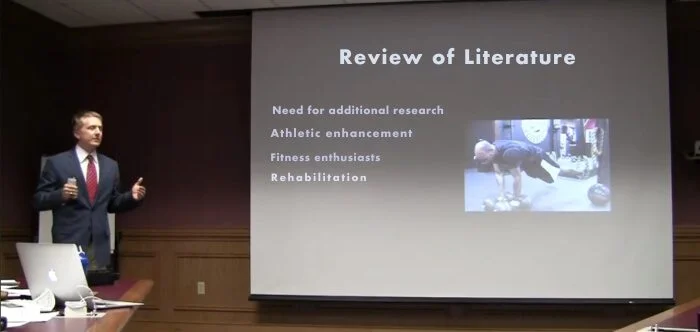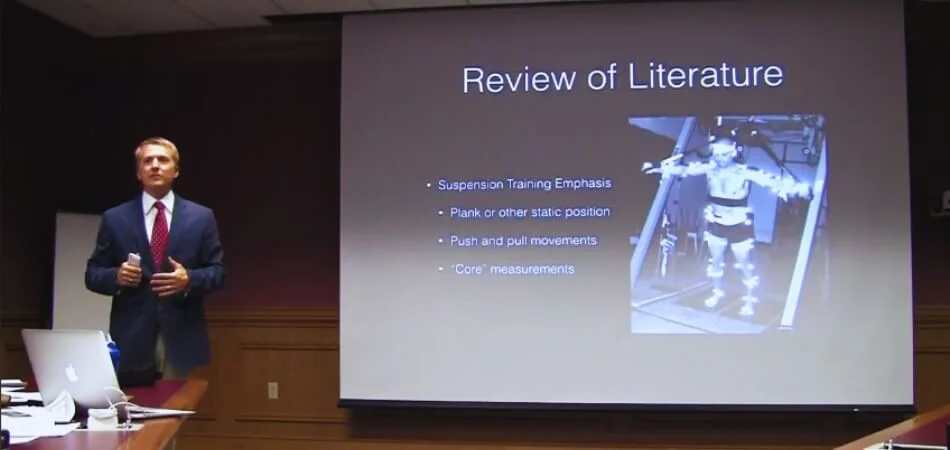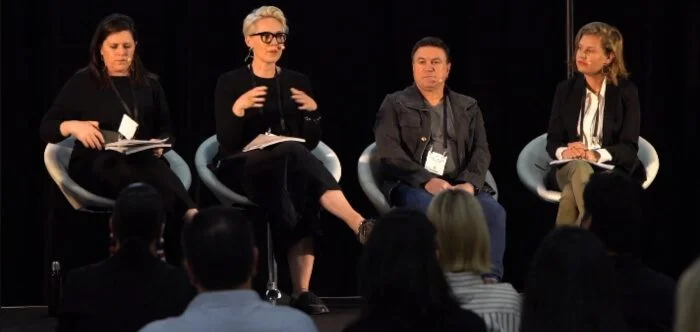Presenting a literature review at a conference is an art that balances information delivery with engaging storytelling. In the context of “How do you present a literature review in a conference?” it’s essential to transform your extensive review into a concise, impactful presentation.
The presentation involves highlighting key findings, elaborating on methodologies, and illustrating their significance in relation to the conference’s theme. To captivate your audience, incorporate visuals and accurately cite your sources, ensuring your presentation is both informative and visually appealing.
Moreover, an engaging delivery style can substantially impact audience reception. Be prepared to handle questions and encourage discussions, turning your presentation into an interactive learning experience. For more insights and detailed guidance, continue reading our comprehensive article.
What Is the Literature Review?
A literature review is a scholarly endeavor that synthesizes existing research on a specific topic. It’s not merely a summary; it critically analyzes and links various studies. This comprehensive overview helps identify patterns, gaps, and the current state of knowledge.

In undertaking a literature review, the researcher examines relevant publications to establish an understanding of the subject. This process involves evaluating sources’ relevance, credibility, and contributions to the field. The outcome is a cohesive narrative contextualizing the research within its academic landscape, providing a foundation for new inquiries.
Can You Present a Literature Review at A Conference?
Yes, presenting a literature review at a conference is a valuable contribution. It offers insights into existing research and highlights emerging trends in a specific field. This presentation can spark discussions and foster academic collaborations.
When presenting a literature review at an event with multinational participants, the key is to distill complex information into accessible insights. This involves selecting key studies, weaving them into a narrative, and emphasizing their collective significance. Such a presentation can illuminate research gaps, setting the stage for future work.
In doing so, the presenter navigates through various studies, offering a critical analysis and synthesis. This approach educates and engages the audience, inviting them to explore the subject deeper. The literature review thus catalyzes knowledge exchange and scholarly debate at the conference.
Why Should You Present Your Literature Review at A Conference?
Presenting a literature review at a conference is a strategic move for any researcher or academic. It is a platform to share findings, gain feedback, and engage with peers. This opportunity can significantly impact one’s academic journey and research direction.
- Showcasing Expertise: Presenting a review establishes you as a knowledgeable professional. It highlights your ability to analyze and synthesize complex information.
- Networking Opportunities: Conferences attract like-minded professionals, offering a space to build valuable connections. Sharing your review can lead to collaborations and future research opportunities.
- Receiving Constructive Feedback: Peer conference feedback can refine your understanding and approach. This interaction often leads to improvements in your research methodology and perspective.
- Identifying Research Gaps: Discussing your review exposes you to different viewpoints, revealing gaps in current research. This insight can guide your future research endeavors.
Presenting a literature review at a conference is not just about sharing knowledge; it’s a gateway to professional growth, collaboration, and refining your research. It’s an invaluable experience for anyone looking to make a mark in their academic field.
How Do You Present a Literature Review in A Conference?
The process of presenting a literature review at a conference requires careful preparation and strategic execution. It involves a deep understanding of the subject matter and the ability to succinctly and engagingly convey complex ideas. This guide offers a structured approach to ensure your presentation is impactful and memorable.
Step 1: Understand Your Audience
Before you begin, assess who will be attending your session. Tailor your presentation to their knowledge level, interests, and the conference theme.
Step 2: Condense Your Content
Select key findings and essential studies from your review. Focus on presenting these elements clearly and concisely to maintain audience engagement.
Step 3: Create a Compelling Narrative
Weave your selected studies into a story that highlights their relevance and interconnections. This narrative approach makes your presentation more relatable and easier to follow.
Step 4: Utilize Visual Aids
Incorporate visuals like graphs, charts, and infographics to illustrate complex points. These aids can make your presentation more dynamic and understandable.
Step 5: Practice Your Delivery
Rehearse your presentation multiple times. Focus on clarity, pacing, and maintaining a conversational tone to keep your audience engaged.
Step 6: Prepare for Questions
Anticipate potential questions and prepare thoughtful responses. Engaging with your audience in this way can deepen their understanding and interest.
A literature review at a conference offers an ideal platform for showcasing your work and engaging with the academic community. Your presentation will be both informative and engaging if you follow these steps.
Considerations While Presenting Your Paper at A Conference
Presenting a paper at a conference is a crucial moment for any researcher or academic. It’s an opportunity to share your work with peers and experts in your field, receive feedback, and build your professional network. However, several considerations should be taken into account to ensure the presentation is effective and well-received.
- Understand Your Audience: Tailor your presentation to the audience’s expertise and interests. This ensures that your content is relevant and engaging to them.
- Clarity and Conciseness: Be clear and to the point in your delivery. Avoid overloading your presentation with excessive detail or jargon.
- Effective Use of Visuals: Use visuals like charts and slides to complement your speech. Ensure they are clear, relevant, and aid in understanding your points.
- Engaging Delivery: Practice your speech to maintain a natural, confident tone. Avoid monotonous delivery to keep the audience interested.
- Time Management: Adhere strictly to your allotted time slot. Plan your presentation to cover all points without rushing or overextending.
- Prepare for Questions: Anticipate questions and prepare concise, informative answers. This interaction can enhance the audience’s understanding of your work.
A successful conference presentation starts by understanding your audience’s needs and interests. Clear and engaging communication ensures your message resonates, while effective visuals enhance comprehension and retention.
Good time management keeps the presentation focused and allows for interactive discussions or Q&A sessions, fostering deeper engagement with your audience. By considering these factors, you can ensure that your presentation not only conveys your research effectively but also leaves a positive impression on your audience.
Tips to Select the Right Conference for Presenting Your Literature Review
Selecting the right conference to present your research is a critical decision that can significantly impact your academic and professional journey. It’s about finding a platform where your work will be appreciated and can contribute meaningfully to the field. This guide provides strategic tips to help you make an informed choice.
Relevance to Your Field
Choose a conference that aligns closely with your research area. This ensures your work is relevant to the attendees. Look for events where current trends and developments in your field are discussed. A conference with a specific focus can provide a more engaged audience for your topic.
Conference Reputation
Research the conference’s standing in the academic community. Established conferences often attract high-quality research and renowned speakers. Check past conference proceedings to gauge the quality of presentations. A reputable conference can add significant value to your CV and professional profile.
Type of Audience
Consider the typical audience of the conference. Whether it’s more academic or industry-focused can affect the reception of your work. A diverse audience can provide varied perspectives, enriching the discussion around your research. Tailor your presentation to suit the audience for maximum impact.
Networking Opportunities
Evaluate the networking potential of the conference. Conferences are excellent for meeting peers, mentors, and leaders in your field. Look for events that facilitate networking, such as workshops or social gatherings. Networking can open doors to collaborations and future research opportunities.
Publication Opportunities
Some conferences offer publication opportunities in journals or conference proceedings. Choose conferences where your work has the potential to be published. This can provide broader exposure and enhance your research’s credibility. Ensure the publication aligns with reputable and relevant academic journals.
Location and Accessibility
Consider the conference’s location and your ability to attend. The benefits of attending top-notch international conferences are appealing; however, local or regional conferences can also be beneficial. Factor in travel costs, visa requirements, and the conference’s accessibility. Sometimes, a nearby conference can offer more engagement and less logistical stress.
Selecting the right conference requires careful consideration of factors like relevance, reputation, audience type, networking opportunities, publication potential, and location. Making an informed choice can enhance your presentation’s impact, contribute to your professional development, and broaden your academic horizons.
Closing Remarks
In summarizing the key aspects of presenting a literature review at a conference, it’s clear that meticulous preparation and strategic considerations are paramount. From understanding your audience to selecting the right conference, each step is crucial for a successful presentation. “How do you present a literature review in a conference?” becomes a question of not just content, but context and delivery.
Accurate application of these principles ensures that your literature review is not only well-received but also stands out as a significant contribution to your field. Missteps in any of these areas, whether in presentation style or conference selection, can lead to missed opportunities and diminished impact.
Thus, the importance of precision and thoroughness in every aspect of conference presentation cannot be overstated. This holistic approach shapes not only how your work is perceived but also your professional trajectory in the academic community.







